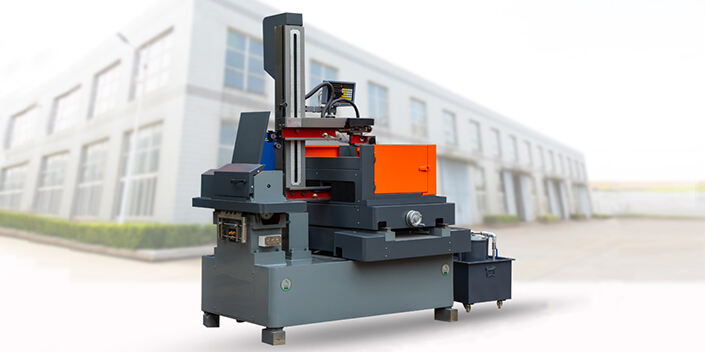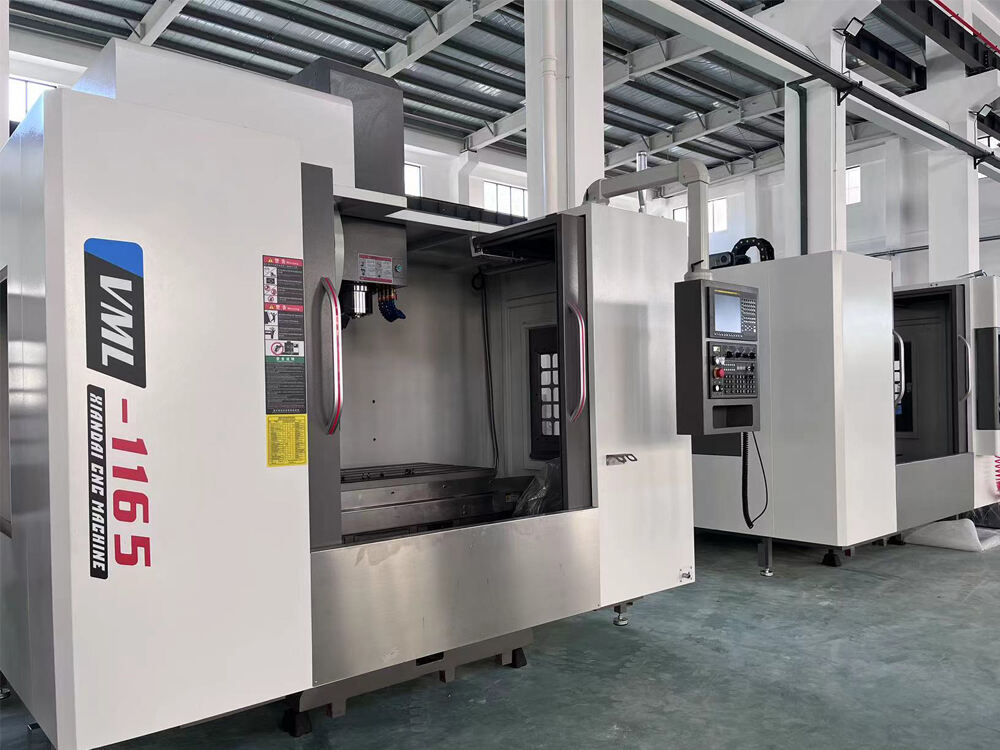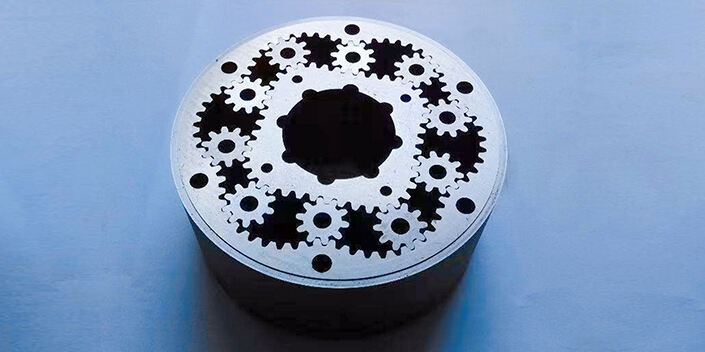Understanding EDM Wire Cutting Technology
The Science Behind Electrical Discharge Machining
EDM, short for Electrical Discharge Machining, works through an interesting mechanism where electrical discharges between electrodes create quick bursts of heat that wear away materials over time. The process creates visible sparks when electricity jumps from the tool to the workpiece across a layer of special dielectric fluid. Things like how much voltage we apply, the strength of the current, and how long each discharge lasts really matter for controlling how fast material gets removed, which makes this technique extremely accurate. Some tests have actually shown that wire EDM systems can hit tolerances within just 0.001 inch either way, something that Brown from Vollmer of America Corp noticed while managing operations in the northeast and southeast regions. Because of this kind of precision, EDM remains essential for industries where getting measurements right down to the smallest detail matters most.
Key Components: Wire Electrode and Dielectric Fluid
In EDM processes, the wire electrode made mostly of copper or brass plays a key role in removing material from workpieces. As it feeds through the part being machined, it cuts out complex shapes with remarkable precision. The dielectric fluid works just as important, helping to wash away metal chips while keeping things cool during operation. What kind of dielectric fluid we use really matters for how smooth the finished surface looks and how efficient the whole process runs. According to Coward at Makino Inc., even small changes in fluid characteristics can make big differences in machining results. Getting familiar with all these elements helps anyone wanting to get good at EDM wire erosion techniques.
Step-by-Step EDM Wire Erosion Process
EDM wire erosion follows a pretty straightforward sequence. First things first, the wire needs proper tension and the workpiece must be positioned just right for those accurate cuts. When the electricity kicks in, the material starts to melt and evaporate where the electric field is strongest. Operators keep a close eye on the cutting area throughout the whole process to make sure everything runs smoothly and delivers good results. Modern tech from companies like GF Machining Solutions with their iWire system and Makino's Hyper-i controls have really made EDM cutting easier to handle. Ostini from GF Machining Solutions and Coward at Makino both note these advancements help operators get better outcomes without so much guesswork involved. The whole step by step nature of EDM wire cutting shows why it remains such a reliable method for creating complex shapes with incredible accuracy.
Advantages of EDM Wire Cutting in Modern Manufacturing
Precision Engineering for Complex Geometries
EDM wire cutting really stands out when it comes to making those complicated shapes and tiny details that regular machining just can't handle. The process creates clean, sharp corners and all sorts of detailed patterns which gives designers much more freedom to experiment with their creations. As reported by the Society of Manufacturing Engineers, this EDM technique actually works great for manufacturing parts with really tricky geometry without needing extra tooling or setup. Because of how precise it is, manufacturers love using EDM for building these complicated components that have strict requirements for both form and function in fields ranging from aerospace to medical devices where accuracy matters most.
Material Versatility: Hardened Steels to Exotic Alloys
One thing that really sets EDM wire cutting apart is how versatile it is when dealing with different materials. The technology works great on everything from hardened steel to tough superalloys that give other machines trouble. This flexibility matters a lot in sectors such as aerospace manufacturing and medical device production, where working with exotic materials is part of daily operations. Research indicates that EDM systems can tackle materials harder than 70 HRC without breaking a sweat while conventional machining approaches might struggle or even break down completely. For shops needing to maintain tight tolerances across varied material types, EDM wire cutting has become something of a go-to solution in today's precision manufacturing landscape.
Minimizing Mechanical Stress During Cutting
EDM cutting stands out because it doesn't actually touch the material being worked on, so there's much less stress placed on the part itself. This means delicate details stay intact during processing. The result? Components that maintain their shape and form without getting warped or deformed. Studies show that when using EDM, the area affected by heat ends up being much smaller than what happens with traditional cutting techniques, which definitely improves the overall quality of finished products. For shops needing to produce parts where strength and precise measurements matter most, EDM wire cutting has become increasingly popular across various industries due to these advantages throughout the entire manufacturing workflow.
EDM wire cutting continues to revolutionize modern manufacturing with its precise engineering, material versatility, and ability to reduce mechanical stress, making it a critical tool for producing complex and high-quality components.
Key Applications of EDM Wire Cutting Technology
Aerospace Component Fabrication
Wire EDM cutting plays a vital role in making parts for the aerospace industry, especially when it comes to meeting tight tolerances and following strict quality guidelines. Take turbine blades for instance these intricate parts need the kind of precision that traditional methods just cant match. Industry data shows manufacturers have seen shorter production cycles and better performing components since switching to EDM techniques. What makes this technology stand out is how it handles tough materials such as titanium while still achieving those fine details needed for critical aircraft components. The result? Faster turnaround times without compromising on quality standards that aviation regulations demand.
Medical Device and Surgical Tool Production
EDM wire cutting has become indispensable in making medical devices and surgical tools, especially when it comes to crafting complex parts that can withstand high temperatures. This machining method delivers remarkable accuracy and maintains safety standards that are absolutely vital in healthcare settings. Medical professionals rely on these precise cuts because even minor deviations can affect patient outcomes during procedures. The Food and Drug Administration recognizes how EDM machining helps manufacturers hit those tight specifications required for approval. That's why many hospitals and clinics depend on EDM technology for everything from tiny scalpels to durable implants. As healthcare continues evolving, EDM remains at the forefront of innovation in medical device manufacturing.
Automotive Prototyping and Tooling
In the automotive sector, EDM has become a go to method for both prototyping and creating tools because it offers just the right mix between how fast things get done and how precise they need to be. Wire EDM cutting allows manufacturers to produce all sorts of complicated shapes and detailed patterns in their tooling which really speeds up getting prototypes ready. According to what we see happening across the industry, companies report about a 25% boost in production efficiency when they switch to EDM methods. This matters a lot in car manufacturing since getting products out there quickly and having them meet exact specifications is basically table stakes nowadays. With all these advantages, EDM keeps pushing forward the development of new automotive parts at an impressive pace.
EDM vs. Traditional Machining Methods
Tolerance Comparison: Micro-Scale Accuracy
The EDM wire cutting tech delivers amazing precision at microscopic levels when compared to old school machining techniques, which makes it a must-have tool for any job requiring tight tolerances. We're talking about achieving measurements within just 0.0001 inches either way something most traditional machines simply cant match. This kind of accuracy matters a lot in certain fields where getting things right down to the last decimal point isn't optional but absolutely required. Think about airplane parts or surgical instruments where even tiny deviations could spell disaster. Industry insiders keep pointing out that this remarkable level of detail has pushed EDM into prime position across many manufacturing areas where nothing less than perfection will do, and honestly who can blame them when looking at what traditional approaches struggle to accomplish?
Handling Heat-Sensitive Materials
EDM works really well for working with materials sensitive to heat because it basically avoids the thermal damage problems we see in regular machining methods. Since there's so much less heat involved in EDM processes, parts don't get distorted as much, which means factories spend less money and time on those annoying post-processing steps everyone hates. Manufacturers who work with tricky heat-sensitive alloys have found through actual shop floor experience that EDM wire erosion just beats traditional cutting tools hands down for these applications. The fact that EDM keeps the material intact without compromising on accuracy makes it the go to option for many shops dealing with fragile materials where even small mistakes can ruin entire batches.
Cost-Efficiency in Low-Volume Production
For small batch manufacturing where complex parts need to be made without breaking the bank, EDM stands out as a cost effective solution. Setup does take some time upfront, but when looking at the bigger picture across multiple production runs, the economics work out pretty well for those intricate jobs. What makes EDM really stand apart is how electrodes can be reused over and over again, cutting down on both material waste and ongoing costs. Industry insiders note that while there's definitely a steeper price tag at the start compared to other methods, companies tend to save money in the long run because EDM processes typically run faster and make better use of available resources. This makes EDM not just a good choice, but often the best bet for manufacturers who prioritize getting things right rather than going for the cheapest short term fix.
Through these advantages, EDM wire cutting technology distinguishes itself from traditional machining methods, delivering precise, efficient, and adaptable solutions across various industries.
Optimizing EDM Cutting Performance
Advanced CNC Control Systems
The advanced CNC control systems used in EDM cutting really make a difference when it comes to getting the most out of this machining process. What sets them apart is their ability to finely tune all those cutting parameters, which means parts come out more accurate and production runs take less time overall. When manufacturers implement adaptive machining strategies, these CNC systems actually change settings on the fly based on what they're seeing during operation. Some shop floor data indicates that shops which have added CNC tech to their EDM equipment often see around a 30% jump in productivity numbers. For companies working in fields like aerospace or automotive manufacturing where even small improvements matter a lot, this kind of upgrade pays off big time both in terms of part quality and bottom line savings.
Wire Tension and Feed Rate Strategies
Getting wire tension right along with managing feed rates makes all the difference when it comes to EDM cutting performance. These factors really affect how fast things go and what kind of surface finish we end up with on parts. Looking at shop floor data shows that making small changes to feed rates can boost cutting speeds by around 40 percent without sacrificing quality too much. For shops working with EDM wire cutting day in and day out, adjusting these parameters becomes second nature as they strive for better results without compromising on part quality requirements.
Dielectric Fluid Management Best Practices
Proper handling of dielectric fluid remains key to getting reliable results from EDM machining operations. This special fluid does double duty by keeping workpieces cool during cutting while also washing away metal chips and other debris that builds up over time. When operators neglect regular checks and timely replacements, the fluid breaks down and loses effectiveness, which slows down production rates and increases tool wear. Most shops track important parameters like conductivity and contamination levels because research shows these factors directly affect both how fast parts get machined and how precise those cuts turn out to be. Maintaining clean, high quality dielectric fluid isn't just good maintenance - it's what separates average EDM shops from those consistently hitting tight tolerances day after day.





